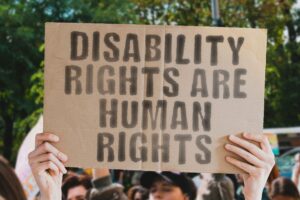 On May 1, 2024, the U.S. Department of Health and Human Services (HHS) and its Office for Civil Rights (OCR) published a final rule strengthening protections for people with disabilities. The rule will take effect on June 29, 2024. Titled Discrimination on the Basis of Disability in Health and Human Service Programs or Activities, this rule ensures fairness and equal treatment for people with disabilities under Section 504 of the Rehabilitation Act.
On May 1, 2024, the U.S. Department of Health and Human Services (HHS) and its Office for Civil Rights (OCR) published a final rule strengthening protections for people with disabilities. The rule will take effect on June 29, 2024. Titled Discrimination on the Basis of Disability in Health and Human Service Programs or Activities, this rule ensures fairness and equal treatment for people with disabilities under Section 504 of the Rehabilitation Act.
Section 504 of the Rehabilitation Act
U.S. Census data show that, as of 2021, there are more than 42 million people who have a disability in the United States.
Since 1973, the Section 504 of the Rehabilitation Act has sought to guarantee certain rights to this population. It became one of the first federal civil rights laws offering protection for Americans with disabilities. In basic terms, Section 504 prohibits the exclusion of otherwise qualified individuals with disabilities from any program or activity that receives federal financial assistance.
What the Section 504 Final Rule Clarifies
According to HHS, the latest rule “clarifies and strengthens civil rights protections for people with disabilities, addresses discrimination in medical treatment, adds enforceable standards for accessible medical diagnostic equipment, and ensures accessible web content and mobile apps.” It seeks to help protect Americans from discrimination during their participation in any program or activity that receives funds from HHS.
The Section 504 regulations have been updated to clarify several areas. Specifically, the rule:
- Ensures that medical treatment decisions are not based on negative biases or stereotypes about people with disabilities, judgments that a person with a disability will be a burden on others, or dehumanizing beliefs that the life of a person with a disability has less value than the life of a person without a disability.
- Prohibits the use of any measure, assessment, or tool that discounts the value of a life extension based on disability to deny, limit, or otherwise condition access to an aid, benefit, or service.
- Defines what accessibility means for websites and mobile applications and sets forth a specific technical standard to ensure that health care and human service activities delivered through these platforms are readily accessible to, and usable by, people with disabilities.
- Adopts the U.S. Access Board’s standards for accessible medical diagnostic equipment, such as exam tables and mammography machines.
- Details requirements to ensure nondiscrimination in the services provided by HHS-funded child welfare agencies. These include parent-child visitation, child placement, parenting skills programs, and more.
- Clarifies obligations to provide services in the most integrated setting, such as receiving services in one’s own home, appropriate to the needs of individuals with disabilities.
Since many HHS recipients are also covered by the Americans with Disabilities Act (ADA), this final rule also updates existing requirements to better align them with the ADA.
“Section 504 makes a fundamental promise that disabled people will be treated as full and equal members of the community,” said HHS General Counsel Samuel Bagenstos. “In health and social services programs, keeping that promise can mean the difference between life and death for people with disabilities. Today’s final rule implements critical updates to ensure that HHS continues to make good on that promise.”
Seek Expert Advice on Disability Discrimination
Sometimes disability discrimination can be difficult to detect. If you believe that you or someone you know has been discriminated against because of a disability, or for any other reason, you can visit the Office for Civil Rights website to learn more or file a complaint.
You can also learn more about your rights and any legal recourse you may have against disability discrimination by contacting an experienced special needs planning attorney near you today. They can discuss your specific situation and your options with you.

Recent Comments